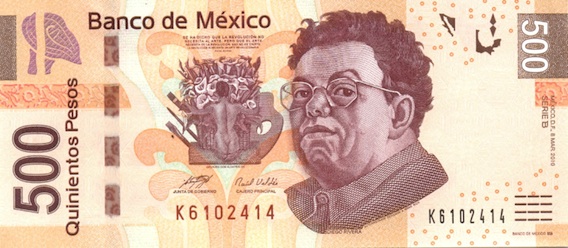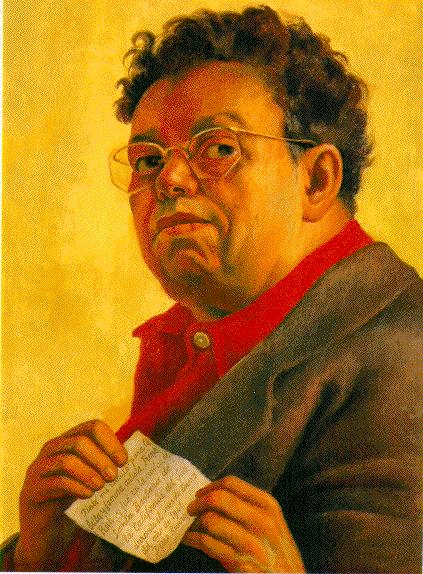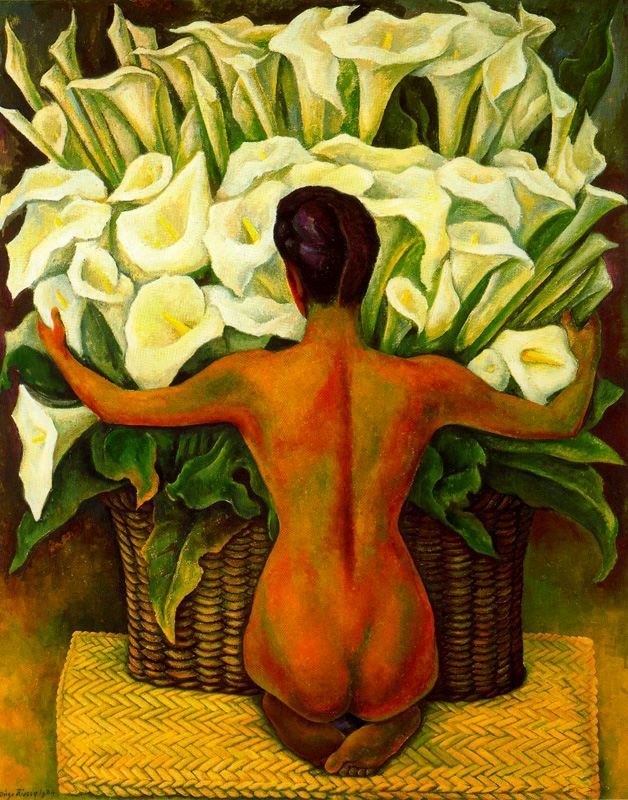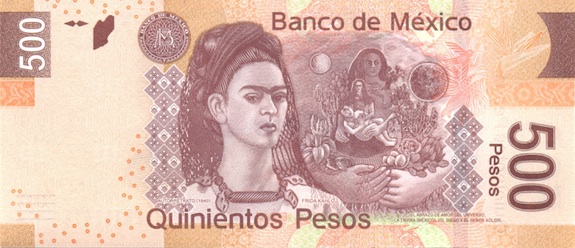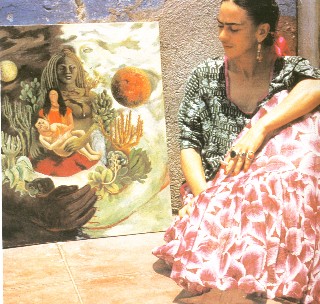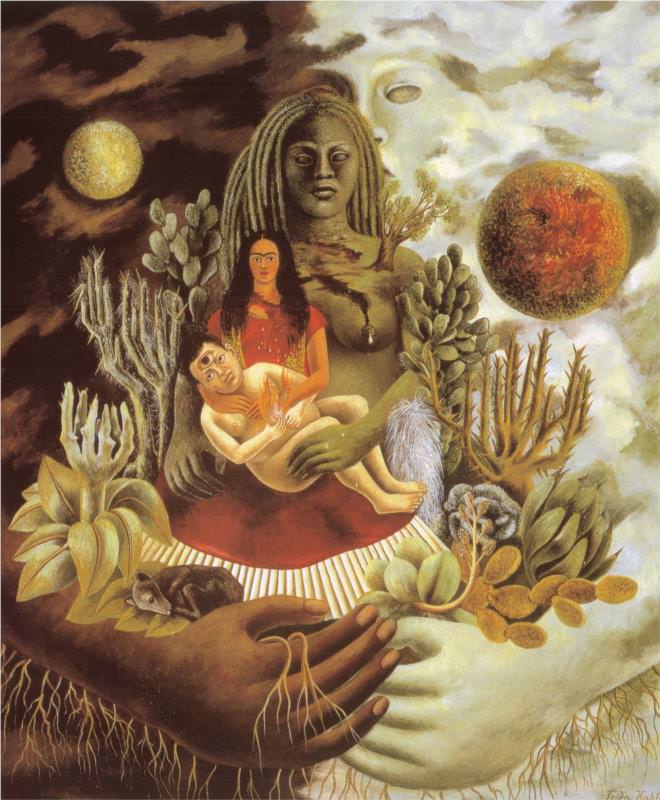On the obverse side, it has the figure of Diego Rivera and his painting: <Nude with Calla Lilies> (Desnudo con alcatraces)
** Diego Rivera Diego Rivera (December 8, 1886 – November 24, 1957) was a prominent Mexican painter and the husband of Frida Kahlo. His large wall works in fresco helped establish the Mexican Mural Movement in Mexican art. He strived to deliver strong social messages within his paintings for the normal illiterate people. ** Nude with Calla Lilies (Desnudo con alcatraces) Nude with Calla Lilies was painted in 1944. Also known as, it lacks the searing social and political commentary so frequently found in Rivera paintings. Rivera, not surprisingly, is better with more humble subjects and frequently he celebrated the relationship of peasants and nature. The calla lily, a sensual, sculptural flower - and quintessential example of Mexico's exuberant flora - was celebrated by Rivera many times, particularly in frescoes depicted peasants with indigenous features carrying bundles or offerings of them.On the reverse side, it has the figure of Frida Kahlo and her painting: <Autorretrato en la frontera entre el abrazo de amor de el universo, la tierra (México), yo, Diego y el Señor Xólotl> (The Love Embrace of the Universe, the Earth (Mexico), Myself, Diego and SeñorXólotl)
**Frida Kahlo Frida Kahlo was a Mexican painter best known for her self-portraits. She suffered lifelong health problems, many of which were the result of a traffic accident she survived as a teenager. A volatile marriage with the famous Mexican artist Diego Rivera was another reason to suffer. Recovering from her injuries isolated her from other people and this isolation influenced her works, many of which are self-portraits of one sort or another. Kahlo's life began and ended in Mexico City, in her home known as the Blue House. She gave her birth date as July 7, 1910, but her birth certificate shows July 6, 1907. Kahlo had allegedly wanted the year of her birth to coincide with the year of the beginning of the Mexican Revolution so that her life would begin with the birth of modern Mexico. Her work has been celebrated in Mexico as emblematic of national and indigenous tradition, and by feminists for its uncompromising depiction of the female experience and form. Mexican culture and Amerindian cultural tradition are important in her work, which has been sometimes characterized as Naïve art or folk art.[8] Her work has also been described as "surrealist", and in 1938 André Breton, principal initiator of the surrealist movement, described Kahlo's art as a "ribbon around a bomb". Kahlo had a volatile marriage with the famous Mexican artist Diego Rivera. She suffered lifelong health problems, many of which were the result of a traffic accident she survived as a teenager. Recovering from her injuries isolated her from other people and this isolation influenced her works, many of which are self-portraits of one sort or another. Kahlo suggested, "I paint myself because I am so often alone and because I am the subject I know best."[9] She also stated, "I was born a bitch. I wasborn a painter." **Autorretrato en la frontera entre el abrazo de amor de el universo, la tierra (México), yo, Diego y el Señor Xólotl (1949) **(The Love Embrace of the Universe, the Earth (Mexico), Myself, Diego and SeñorXólotl) The subject of this painting contains many elements derived from ancient Mexican mythology. The subject of this painting contains many elements derived from ancient Mexican mythology. Frida's inability to bear children led her to adopt a maternal role towards Diego. In the center of the painting, like a Madonna, she holds her husband Diego in a love embrace that illustrates the combining relationship of women and men. Although the woman is the nurturing figure, the man has the third eye of wisdom in his forehead, so they are both dependent on each other. Embracing the human couple is the Aztec Earth Mother, Cihuacoatl, made from clay and rock. The outermost figure, the Universal Mother, embraces Cituacoatl. In the foreground, the Itzcuintli dog, Senor Xolotl, is more than simply one of the artist's favorite pets: it represents Xolotl, a being in the form of a dog who guards the underworld. In this painting, Frida presents life, death, night, day, moon, sun, man and woman all in a recurring dichotomy which is deeply intertwined and all is held together by two powerful mythological beings. In August of 1947, Frida drew a primitive sketch of this painting in her diary.





